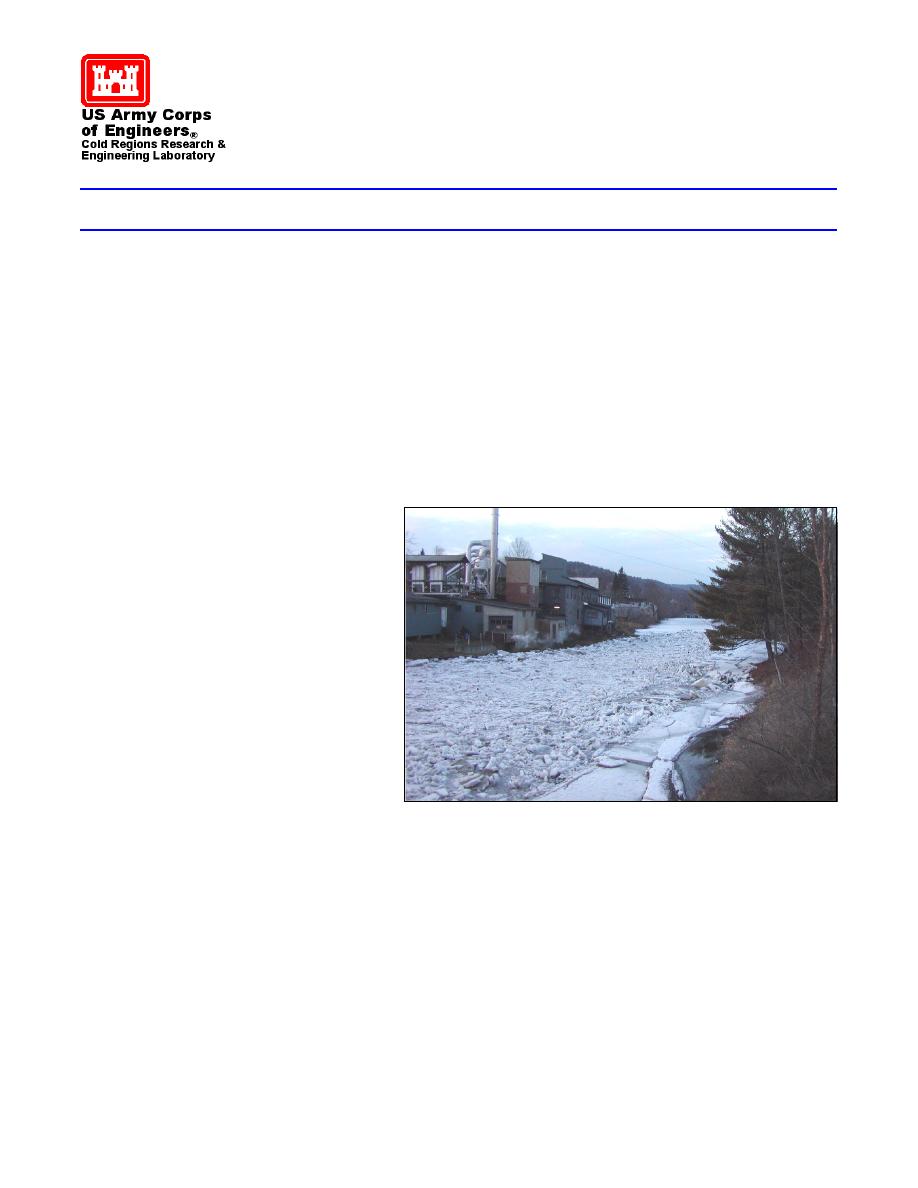
Ice Engineering
U.S. Army Engineer Research and Development Center, Hanover, New Hampshire
Ice Jams, Winter 20012002
During winter months, ice jams may form on rivers, lakes, and streams in cold regions. Ice jams form during initial ice
cover formation as the ice accumulates, restricting water flow (freezeup jam), and also when the ice cover breaks apart and
begins to move (breakup jam) (Fig. 1). When rivers become jammed with ice, riverine communities upstream from an ice
jam can suffer severe effects as a result of backwater flooding and structural impacts of ice. Excessive water and ice
associated with ice jams often causes damage to bridges, roads, and buildings. Roads and runways can be forced to close, and
bridges can be damaged or destroyed, delaying or limiting emergency aid in evacuation situations. Transportation of heating
fuel and other necessary cargo can be temporarily halted as both roadways and waterways are affected.
Areas downstream from jams can also be affected if they experience sudden decreases in flow as backwater occurs
upstream. These decreases in flow can cause water intakes to become exposed, threatening water supplies to municipalities,
industries, and power plants. Communities downstream of the jam can also be affected by the rapid surge of water and ice
that occurs when a jam releases.
Ice movement can also affect the environ-
ment through scour and erosion of riverbeds and
riverbanks, disturbing riparian vegetation, fish
habitat, and wildlife. Because of the rapidity of
ice events, engineers and other officials often
have little time to evacuate or mitigate the jam to
prevent costly damages. Ice jam damages have
been estimated to cost the United States over
0 million annually.
Engineers and Federal, State, and local offi-
cials are working together to create methods to
predict when and where ice jams will occur, to
prevent jams from forming, and to avoid serious
damages from jams that do form. Such projects
require accurate data to help prepare communi-
ties for future ice events. The U.S. Army Corps
of Engineers Engineer Research and Develop-
ment Center's Cold Regions Research and Engi-
neering Laboratory (CRREL) has developed and
maintains an Ice Jam Database, which is a com-
pilation of freezeup and breakup ice jam events in the United States (White 1996). There are currently over 13,000 entries in
the database, the earliest occurring in 1780. The database has entries covering 42 states, ranging from one each in Arizona,
Delaware, North Carolina, and Texas, to over 1,300 in Montana. CRREL's database is a reliable resource used to research
previous ice jams and to assess specific situations that may cause ice jam formation. Each entry includes river name, latitude
and longitude, city and state, U.S. Geological Survey (USGS) gage number (if available), USGS hydrologic unit code, jam
type and date, local and CRREL contacts, a summary of the event, and a list of publications on the jam. The database can
also serve as a source of documented responses from engineers and officials who helped relieve the emergency situations.
This issue provides an overview of ice events that occurred during water year (WY) 2002, which covers the period from
1 October 2001 to 30 September 2002. There are 32 entries in the database for this year, which is an extremely low number
ERDC/CRREL Technical Note 03-1
January 2003



 Previous Page
Previous Page
